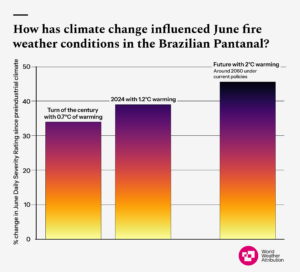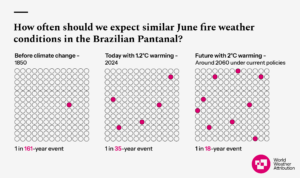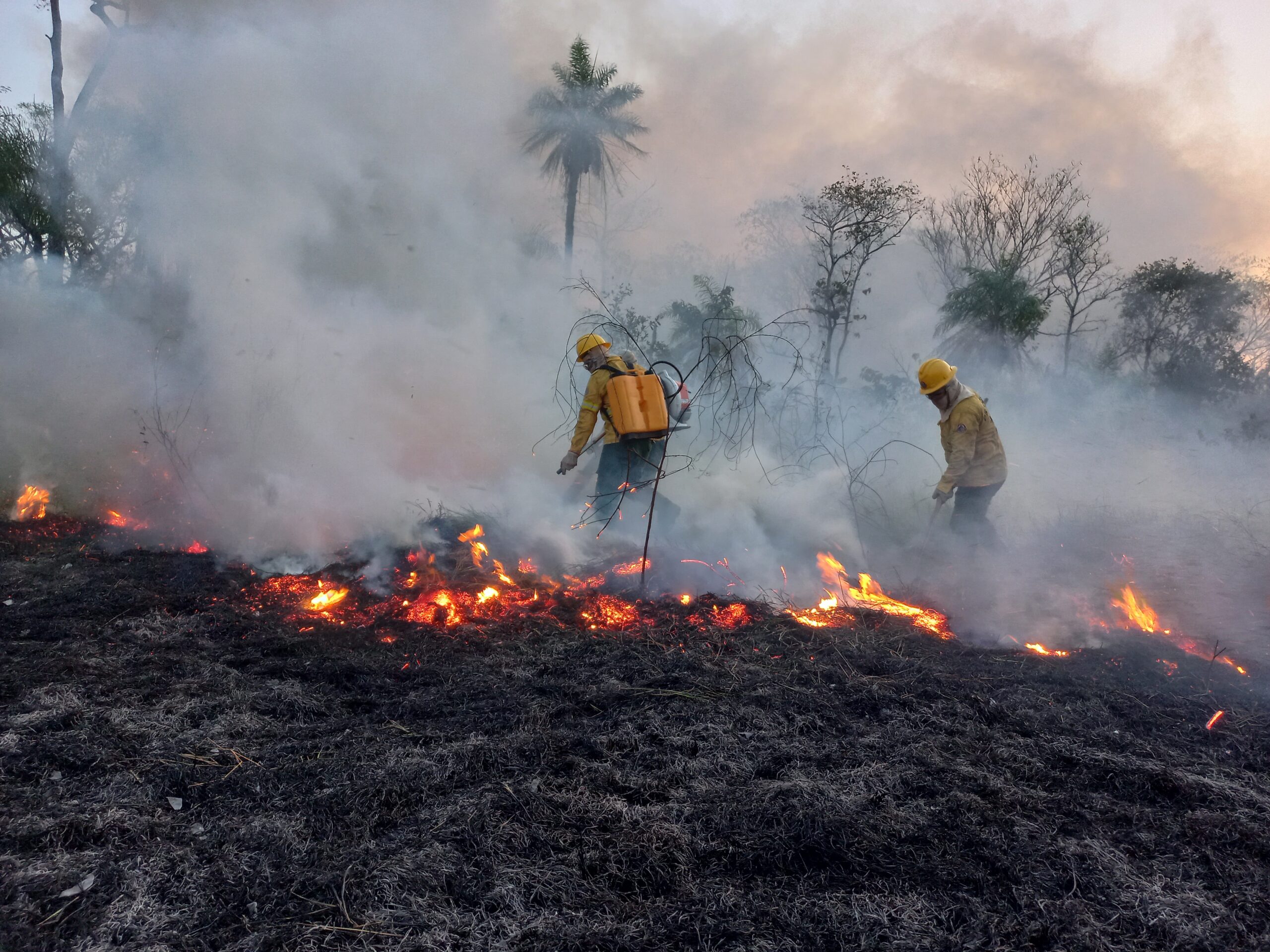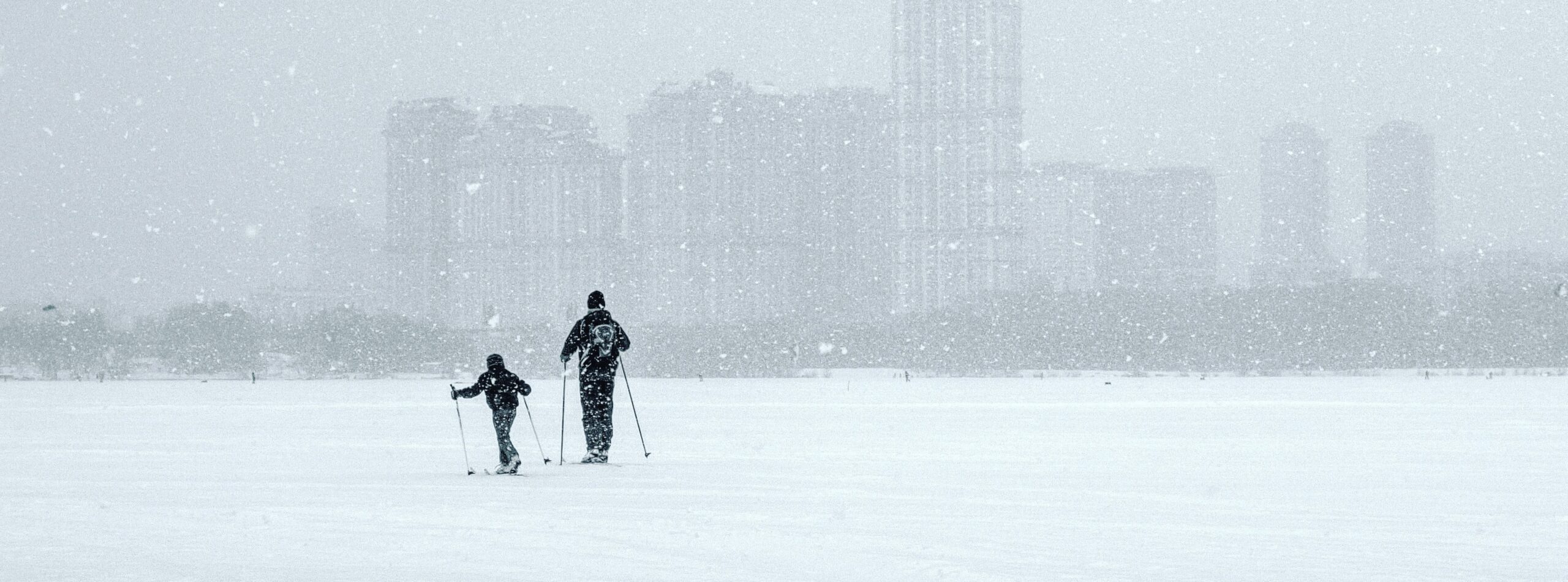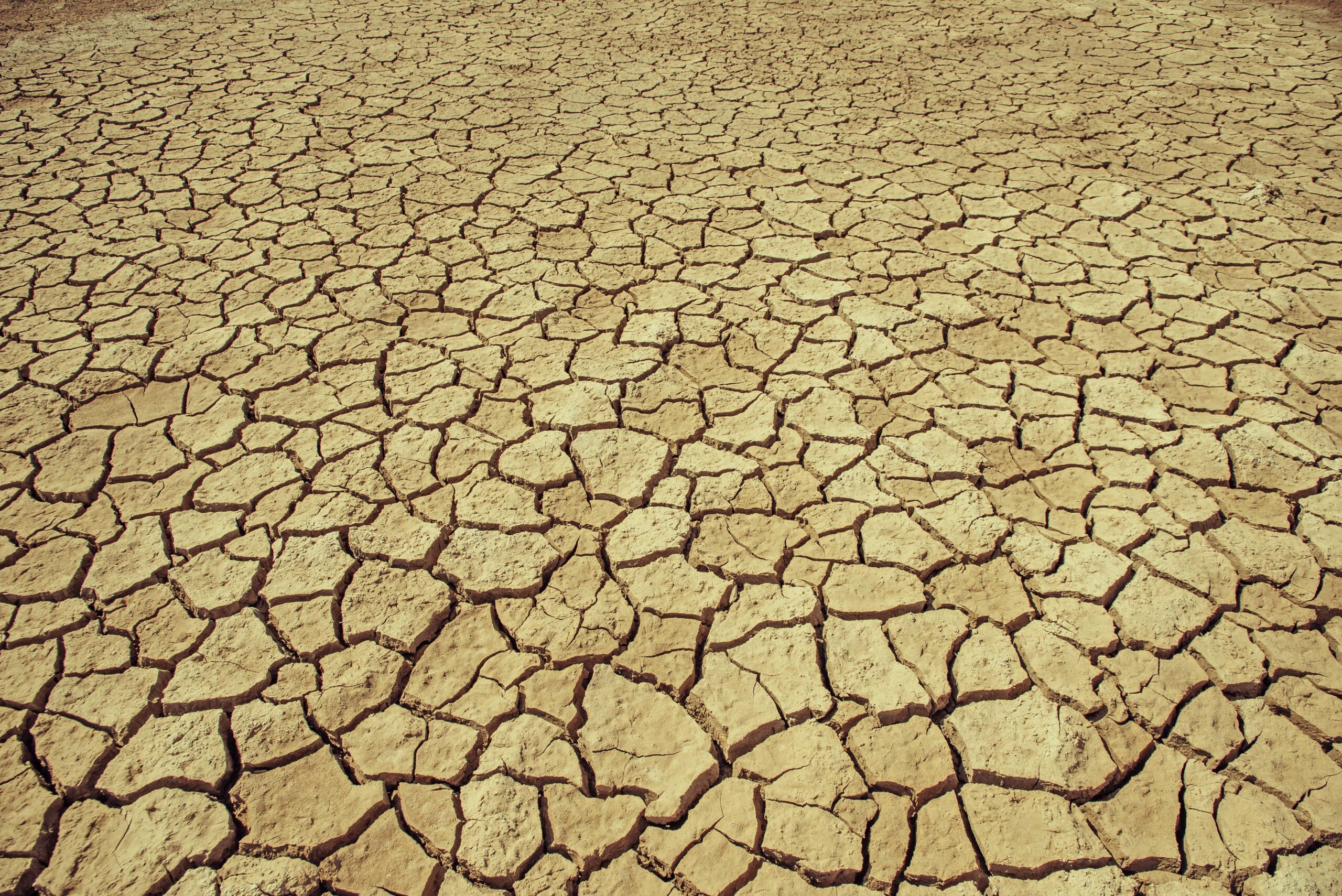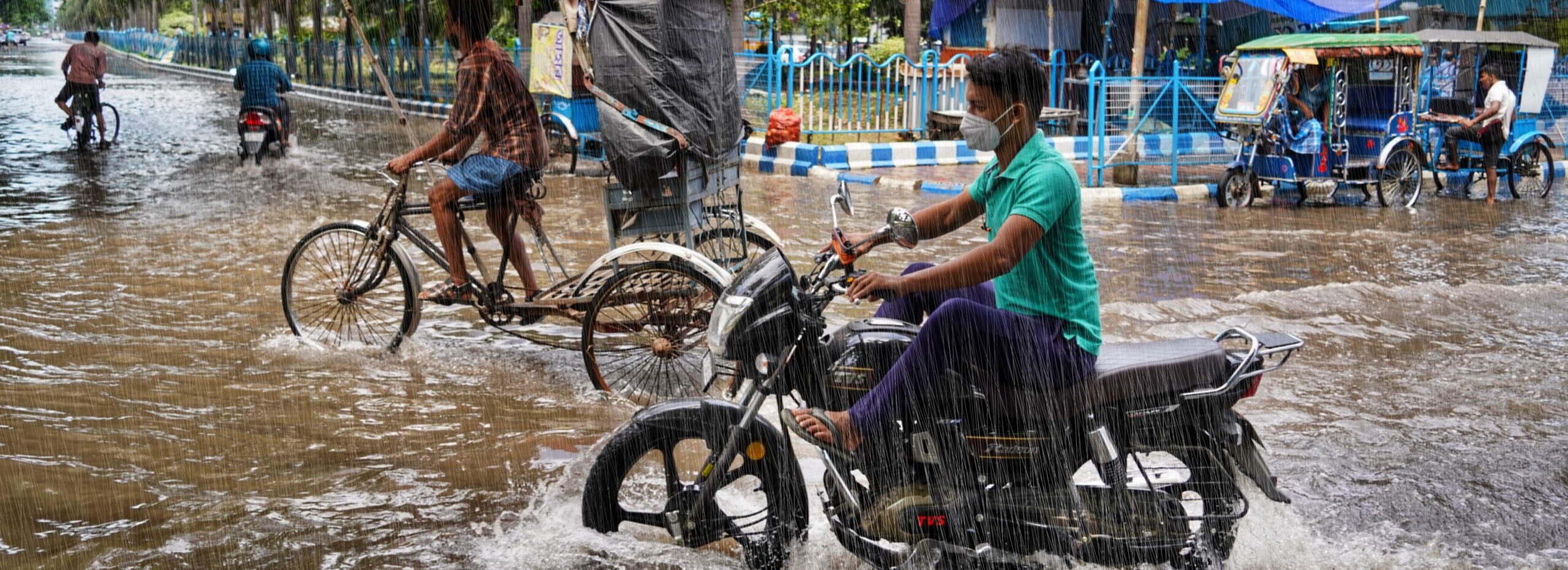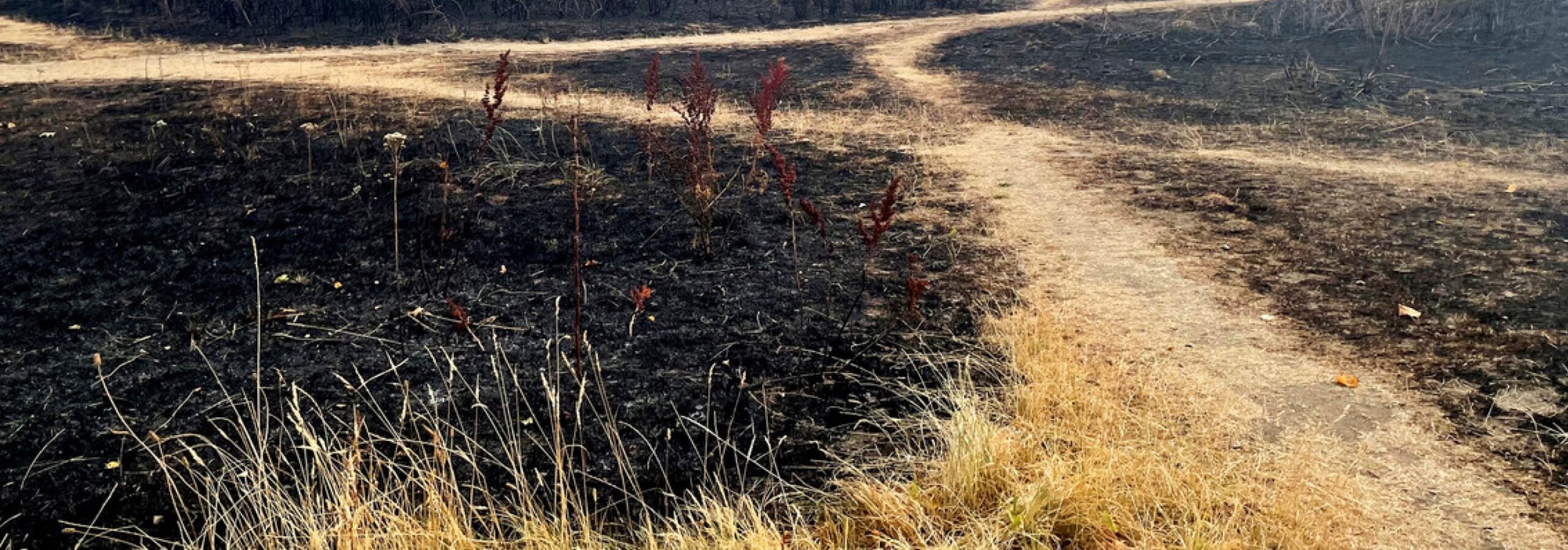While the peak of the fire season usually occurs in August and September, June 2024 was exceptional, with an estimated 440,000 hectares burned in one month, a significantly larger area than the previous June maximum of 257,000 hectares and far exceeding the monthly average of about 8,300 hectares.
Located at the border with Bolivia and Paraguay, the Brazilian Pantanal comprises more than 15 million hectares. The wetland floods seasonally, from November to April, then drains in the dry season from May to October. It holds a huge range of unique species, is home to many indigenous groups, provides important ecosystem services for the surrounding area, supports the livelihoods of tens of thousands of ranchers, farmers and fishers, and is a vast carbon store.
Indigenous and traditional communities are among the worst affected by the wildfires, as traditional lands are destroyed, cultural practices disrupted and people displaced. Economic activities such as tourism and agriculture are also threatened, with crop losses and livestock deaths. The fires have also killed innumerable wild animals and birds, destroyed vital habitat and made life much more difficult for the animals that were able to escape, as food and water has become increasingly scarce.
Human-induced climate change is increasing wildfires in many regions of the world, as hot, dry and windy weather conditions increase the risk of fires both starting and spreading. Researchers from Brazil, the Netherlands, Sweden and the United Kingdom collaborated to assess to what extent human-induced climate change altered the likelihood and intensity of the weather conditions that fuelled the Pantanal wildfires, and how the conditions will be affected with further warming. Due to the difficulty of accounting for human activity in both starting and suppressing wildfires, we attribute the fire weather conditions, not the burned area itself.
To illustrate the extent and duration of extreme fire weather in the region, we use the cumulative Daily Severity Rating (DSR) for June, averaged over the Brazilian Pantanal (indicated by the solid black outline in Figure 1a). The DSR indicates how difficult it is to control a fire once it starts and it is commonly used to assess fire weather over monthly or longer periods. The DSR is derived from the Fire Weather Index (FWI), which uses meteorological information (temperature, humidity, wind speed and precipitation over the preceding weeks and days) to predict the expected energy release per length of the fire-front if a wildfire occurs. We focus on the Brazilian Pantanal where nearly all active fires in June occurred; however, including the wider region, which extends into Bolivia and Paraguay, would likely yield similar results.
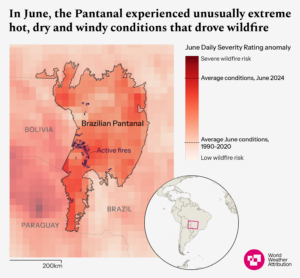
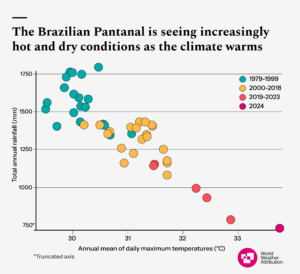
Main findings
- Fire weather is a critical driver of wildfires, although changes in vegetation (wildfire fuel) and fire management strategies also contribute to future wildfire risk. In the Pantanal, land use and land cover changes, such as clearing natural vegetation for pasture or agriculture, contribute to drier conditions and increase the availability of flammable vegetation.
- In today’s climate with 1.2°C of global warming, intense fire weather conditions like the ones that drove the wildfires in the Brazilian Pantanal during June 2024 are a relatively rare event, expected to occur once every 35 years. This means there is about a 3% chance similar June fire weather conditions will occur in any given year.
- Observations show that similar June fire weather conditions, as defined by DSR, are about 3 times more impactful than they would have been in a 1.2°C cooler climate. They would have been about a factor 100 rarer had the climate not been warmed by humans.
- To determine the role of climate change, we combine fire weather observations with climate models. Human-induced warming from burning fossil fuels made the June 2024 DSR about 40% more impactful and 4-5 times more likely.
- These trends will continue with future warming. If warming reaches 2°C, similar June fire weather conditions will become around twice as likely, expected to occur on average about once every 17 years, and will become 17% more impactful.
- To understand how the June fire-weather conditions are affected by human-induced climate change, we also investigate the weather variables comprising the DSR: maximum temperature, relative humidity, wind speed and rainfall. Most of these variables broke records in June 2024: it was the driest, hottest, and windiest June since observations began. Only relative humidity was the second lowest on record.
- Next, we analyse how climate change alters likelihood and intensity of these four main weather variables. In the observations there is a strong drying trend and, as expected, increasingly high temperatures (figure 1b) accompanied by a reduction in relative humidity, while there is no clear trend in wind speeds. Thus, the increase in DSR can be explained by increasing temperatures – driven by climate change – and decreasing rainfall.
- Yearly rainfall in the Pantanal has been decreasing for over forty years. While natural decadal variability and deforestation in large ecosystems are known to affect rainfall patterns across South America, climate change may also be influencing the drying trend.
- The June 2024 fires spawned multi-ministry response actions to try to contain fires and save wildlife and livelihoods, such as the establishment of 13 new bases to accelerate the deployment of firefighters to remote areas. However, while significant steps have been taken to address the Pantanal wildfires, there are still substantial challenges to containment and extinguishment efforts. It is imperative that government agencies at all levels act swiftly and prepare for increasingly critical situations, as projections indicate a rise in such events.
